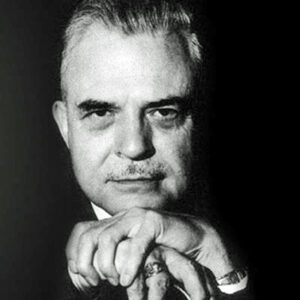Double Binds Explained - Useful NLP & Hypnotic Language Patterns for Suggestion
 A double bind is a well-respected, useful language pattern in both NLP (out of hypnosis) and hypnotherapy. This technique was famously used by Milton Erickson in his therapy sessions and is still used frequently today. It is used for delivering suggestions with 1 or more choices in. The wonder of it is that it inevitably ends up with you making a positive choice for yourself about yourself and let’s face it, you are the expert about you. Some useful examples here (in NLP and hypnotherapy sessions, by parents to children, salespeople to potential clients and bosses to staff) make the technique clear for all.
A double bind is a well-respected, useful language pattern in both NLP (out of hypnosis) and hypnotherapy. This technique was famously used by Milton Erickson in his therapy sessions and is still used frequently today. It is used for delivering suggestions with 1 or more choices in. The wonder of it is that it inevitably ends up with you making a positive choice for yourself about yourself and let’s face it, you are the expert about you. Some useful examples here (in NLP and hypnotherapy sessions, by parents to children, salespeople to potential clients and bosses to staff) make the technique clear for all.
Double Binds Offer Choice with Any Outcome Being Positive
 This is a useful method of delivering suggestion because, it works very well for most people. It works well in normal conversation and during NLP or hypnosis sessions. It offers suggestion with a choice of outcomes. Personally, I believe in making all possible choices positive. Then you are able to select the right positive outcome for yourself. Examples below clarify how it works but, basically you are offered a choice between positive outcomes and are not offered a negative outcome. There is another alternative I generally don’t use whereby you are offered a choice between something very good you want and something very bad. Generally, people will choose very good results over very bad ones. I mean, wouldn’t you?
This is a useful method of delivering suggestion because, it works very well for most people. It works well in normal conversation and during NLP or hypnosis sessions. It offers suggestion with a choice of outcomes. Personally, I believe in making all possible choices positive. Then you are able to select the right positive outcome for yourself. Examples below clarify how it works but, basically you are offered a choice between positive outcomes and are not offered a negative outcome. There is another alternative I generally don’t use whereby you are offered a choice between something very good you want and something very bad. Generally, people will choose very good results over very bad ones. I mean, wouldn’t you?
Double Bind Examples in Hypnosis
Double binds are often used in hypnotherapy treatments. Some exaggerated examples of suggestions inducing hypnosis might be:
- Now if you simply close or shut your eyes … good … and take two or three deep breaths and let yourself to be as lazy or relaxed as you wish to be as you hear or listen to the sound of my voice.
- And as you walk or stroll or wander along this path in the woods you feel or notice a gentle breeze on your face or arms.
Examples Out of Hypnosis in an NLP Therapy Session
- Having now discussed and demonstrated some good stress relieving solutions would you like to practice them more with me or find some other techniques before you do them by yourself or are you ready now? (always assuming there is going to be a good solution for you that you will use)
- We have been talking about you always saying to yourself are not good enough. Would it be better for you, to carry on listening to that constant, critical self-talk in your head or change that voice into a silly, squeaky mouses voice and giggle at it before shooing it away? (which would you choose and which is easier to ignore so you can get on with life?)
Examples as Used by Parents
 Experienced parents use this technique often on children and can pass the concept on to their offspring when they have their own children. All of the outcomes are the ones desired by the parent but, the child does have a choice of which way to go about it. Actually, you might recognise similar double binds that were used by your own parents.
Experienced parents use this technique often on children and can pass the concept on to their offspring when they have their own children. All of the outcomes are the ones desired by the parent but, the child does have a choice of which way to go about it. Actually, you might recognise similar double binds that were used by your own parents.
- Parent: “Are you going to use the rake or the leaf blower to tidy up the lawn now?”
- Parent: “Will you be washing the car now or straight after lunch?”
- Parent: “Which would you prefer to do now, load the dishwasher or wash the dishes in the sink?”
Conversational Double Binds are Used in Sales
Sales representatives will offer a choice, assuming any outcome means a sale.
- Sales rep: “Would you like that car in blue, grey or another colour?”
- Sales rep: “Are you going pay by cash, card or finance?” (Note multiple choices offered which all assume the sale is happening)
Good Bosses Empower Staff This Way
At work a boss giving staff choices empowers them.
- Boss: “What would you like to do next, focus on completing that project before its deadline or complete another task on your worksheet?“
- Boss: “Are you going to write the memo we talked about now or first thing in the morning?”
References:
Rosen S (1982) My Voice Will Go with You: The Teaching Tales of Milton H. Erickson W. W. Norton & Company. Kindle Edition.
Waller D. & Turner B. (2022) Advanced Anxiety Management Course Materials
Waller D (2016) Their Worlds Your Words: The Hypnotherapists Guide to Effective Scripts and Sessions . Ann Jaloba Publishing. Kindle Edition.
Zimmerman K. (2015) Hypnotherapy Refresher Course California Hypnotherapy Academy TranceTime™ Publishing
